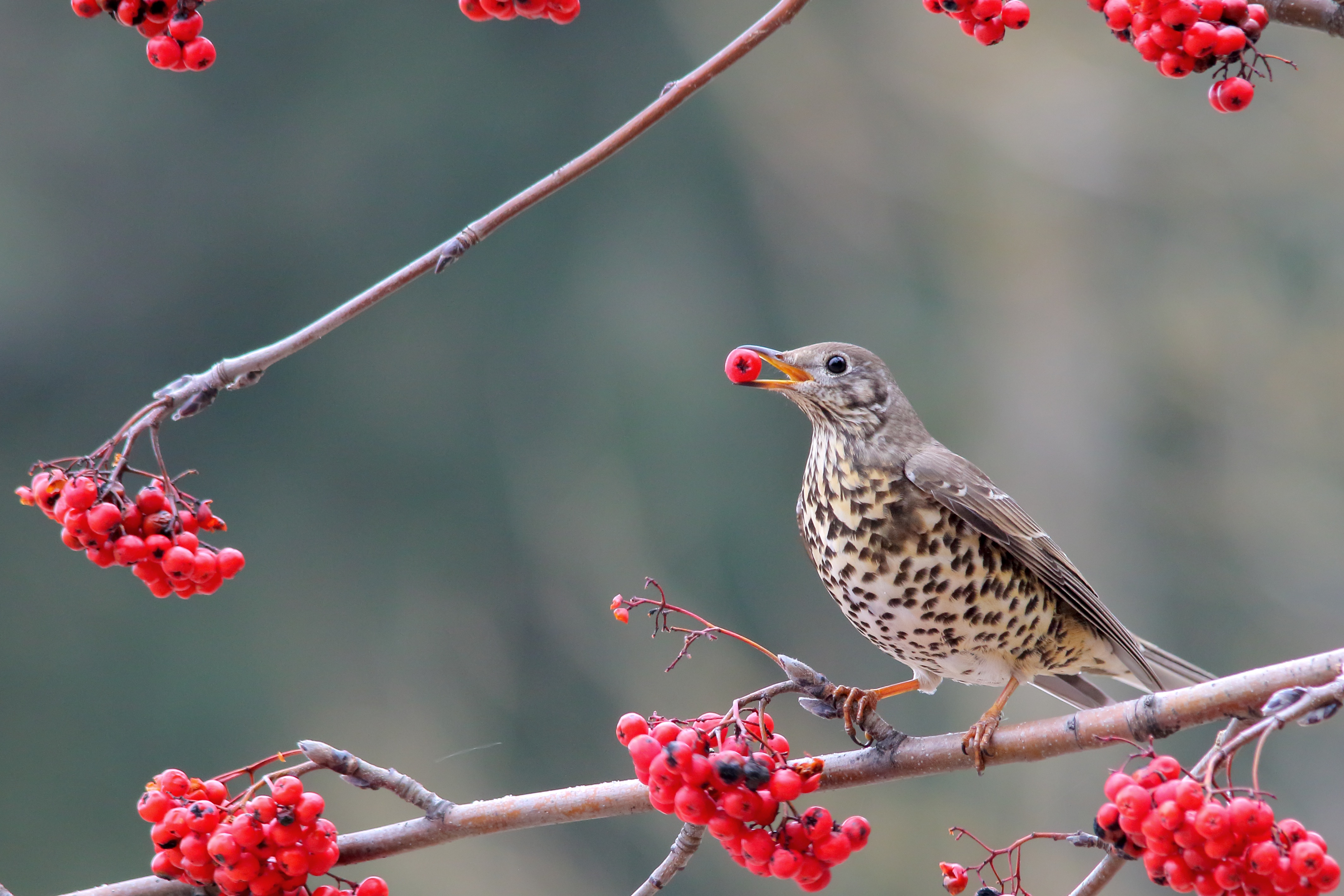It is winter. The wind is howling and the clouds are heavy with rain. The mistle thrush is singing, reminding us that better times are on the way.
Spring is the time we associate with birdsong and since the mistle thrush is an early bird, it begins tuning up its vocal chords and practicing its musical scales in winter. Its rich, fluty call can be heard during the most terrible weather conditions and this has earned it the nickname ‘storm cock’.
For most of the year, beetles, earthworms, snails and slugs are their favourite food but throughout the autumn and winter months they will feed voraciously on the berries of holly, hawthorn, rowan and yew.
Indeed, a pair of mistle thrushes will guard a tree of berries with the same bravery as the fox guarding the hen house.
They are fearless birds and if a magpie or rook comes lurking around their nest looking for a meal of baby mistle thrushes they will defend it with tooth and claw.
These beautiful open cup nests, built in the forked branches of trees are woven with grasses, mosses and roots and held together with mud and leaves.
Occasionally, pine needles are added to reduce parasite numbers. Some pairs have been known to build their nests and successfully rear their clutches in traffic lights and hanging baskets.
The mistle thrush’s name is derived from its fondness for mistletoe berries and no plant is more associated with love than mistletoe.
As you head out on your winter walks, keep an eye out for the beautiful speckled breast and grey, brown plumage of the mistle thrush.
Their bursts of song, radiating through the silent days of winter will remind us of God’s unending love which is present everywhere, especially in the song of the magical mistle thrush.
By Elizabeth McArdle

